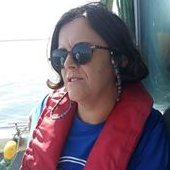Diagnosis and Management of Small-Scale and Data-Limited Fisheries
A special issue of Fishes (ISSN 2410-3888). This special issue belongs to the section "Fishery Economics, Policy, and Management".
Deadline for manuscript submissions: 31 May 2024 | Viewed by 12092
Special Issue Editors
Interests: fisheries management; small-scale fisheries; fisheries selectivity; fisheries governance; fisheries economics; fisheries certifications
Special Issue Information
Dear Colleagues,
Historically, small-scale fisheries (SSF) were overlooked by fishery scientists and managers in comparison to large-scale and industrial fisheries. Despite the fact that SSF account for more than half of global landings (according to some estimates), as well as its importance in job creation, its contributions to food security and to the economies of some of the world’s poorest countries, the assessment, management and monitoring of these fisheries are usually inadequate or absent. This lack of attention has meant fewer resources assigned for data-collection and assessment of their stocks, especially for those stocks with relatively low commercial value. For this reason, most of the world’s fish stocks are considered data-limited. This also compromises the decision-making process and the implementation of adequate management measures and regulation when managers have to make decisions in the absence of data and/or adequate scientific advice.
Recently, scientific attention to SSF and data-limited fisheries is increasing as evidenced by a remarkable increase in peer-reviewed papers on this regard in the last decade. This Special Issue aims to provide new insights and empirical knowledge and to collect original and high-quality manuscripts related to all aspects of small-scale and data-limited fisheries, such as: activity of SSF; assessment of effectiveness of management strategies; IUU fishing; management measures, regulations, policies, and strategies; monitoring programmes; stock assessments; sustainable development of fisheries; sustainable exploitation of resources.
Dr. Mohamed Samy-Kamal
Dr. Célia M. Teixeira
Guest Editors
Manuscript Submission Information
Manuscripts should be submitted online at www.mdpi.com by registering and logging in to this website. Once you are registered, click here to go to the submission form. Manuscripts can be submitted until the deadline. All submissions that pass pre-check are peer-reviewed. Accepted papers will be published continuously in the journal (as soon as accepted) and will be listed together on the special issue website. Research articles, review articles as well as short communications are invited. For planned papers, a title and short abstract (about 100 words) can be sent to the Editorial Office for announcement on this website.
Submitted manuscripts should not have been published previously, nor be under consideration for publication elsewhere (except conference proceedings papers). All manuscripts are thoroughly refereed through a single-blind peer-review process. A guide for authors and other relevant information for submission of manuscripts is available on the Instructions for Authors page. Fishes is an international peer-reviewed open access monthly journal published by MDPI.
Please visit the Instructions for Authors page before submitting a manuscript. The Article Processing Charge (APC) for publication in this open access journal is 2600 CHF (Swiss Francs). Submitted papers should be well formatted and use good English. Authors may use MDPI's English editing service prior to publication or during author revisions.
Keywords
- data-limited fisheries
- fishery management
- management measures
- monitoring programs
- small-scale fisheries
- stock assessment
- sustainability






